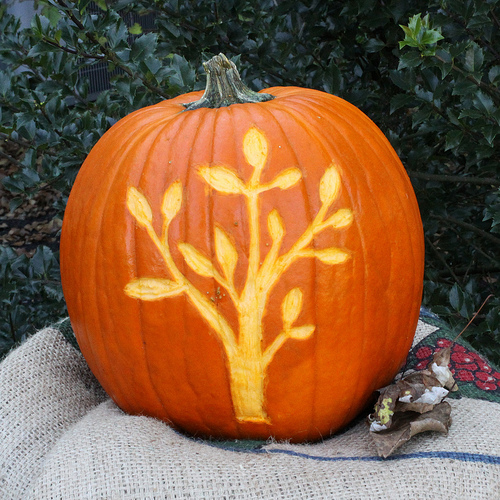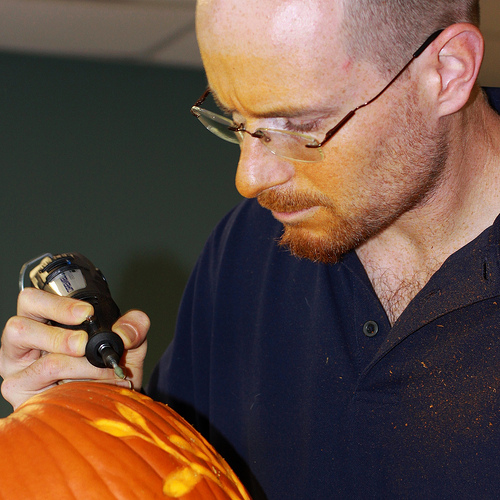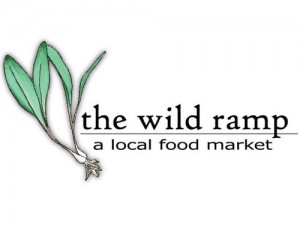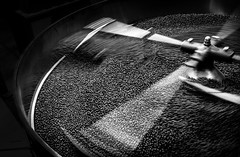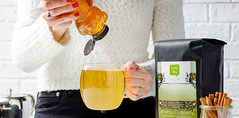Beta-Testing for Beginners
Monday, October 22nd, 2012 by Andrew
“In the beginner’s mind there are many possibilities. In the expert’s mind there are few.” — Shunryu Suzuki
As you may have heard, Coffee Bean Direct is searching for beta-testers to sample and review our coffees and teas. Enthusiasm is the only requirement.
There is a methodology in place for tasting and reviewing coffee and tea, but you do not need to have experience with that. It’s referred to as cupping, a term that makes me slightly uncomfortable. Cafés, roasters, and independent organizations often host cupping events open to the public (so far, we cup privately here at CBD). For a beginner, they can be a great opportunity to learn what you like and how to find it.
Here are some notes I came across recently using a sophisticated smiley face scoring system. This is my preferred style of note-taking.
Notes courtesy of Michael Allen Smith, ineedcoffee.com
Unfortunately someone “reading” these would have trouble learning anything other than what I enjoy. Writing a review that’s not purely subjective takes some practice. You might want to read a few reviews online to see what kind of language you find useful. The cupping notes of experienced reviewers are fun to read for their imaginative descriptions alone. For example, here are some notes I came across for one of our coffees on http://www.coffeereview.com:
“A very light-roasted, naturally sweet coffee that stays just on the rich side of raw. Low-toned but intense aroma: nut notes (raw cashew?) with hints of flowers and butter. In the cup soft acidity with a shimmer of wine, substantial body, continued sweet raw nut notes with hints of butter, chocolate and flowers. Rich, long, slightly heavy finish.”
After reading a few of those, you might start to wonder if your oafish palette is up to the task of reviewing anything. Don’t be intimidated. While noticing what you taste and learning how to talk about it is important, a fresh, unbiased perspective is a valuable one. Also, we’re more interested in how our coffees and teas taste to you as you would normally prepare and drink them than slurped black from a spoon. So instead of going into the nuances of proper cupping technique, I’ll just relay a few things that helped me to move beyond “tastes like coffee”:
- Acids, sugars, and bitters are the principle components of flavor. Sugars are easy to identify. Acids create tartness or tanginess (think lemon). Bitterness is more difficult to describe, but it is commonly associated with a negative harshness (unsweetened chocolate), as opposed to acidity, which can be pleasant and desirable.
- A light roast is not necessarily less flavorful than a dark roast. A light vs dark roast level can highlight different flavors in the same bean. A light batch might be more complex, while a dark batch might have fewer, bolder flavors.
- Strong or weak coffee can be made at any roast level. Strength refers to the ratio of coffee solids to water in a cup of brewed coffee. A dark roast or a flavorful cup is not the same as strong, or concentrated, coffee.
- Body refers to the way the coffee feels, and is independent of flavor. Oils present play a large part in determining whether a coffee feels heavy or more viscous in body, or light/smooth. The more oil present, the heavier the body.
When describing flavor, I recommend using terms that seem accurate and have real meaning for you. They don’t need to be part of the popular cupping lexicon to be useful to readers. For instance, “tastes like night-blooming flowers” sounds lovely, but has little meaning for me. Tell me it tastes like fruity pebbles, and I’ve got a handle on it. If you need a place to start, check out my Pinterest collection of various charts and wheels used to identify coffee and tea flavors and aromas. Don’t be afraid to expand upon them, ignore them, or invent your own!
“In the beginner’s mind there are many possibilities. In the expert’s mind there are few.” — Shunryu Suzuki
As you may have heard, Coffee Bean Direct is searching for beta-testers to sample and review our coffees and teas. Enthusiasm is the only requirement.
There is a methodology in place for tasting and reviewing coffee and tea, but you do not need to have experience with that. It’s referred to as cupping, a term that makes me slightly uncomfortable. Cafés, roasters, and independent organizations often host cupping events open to the public (so far, we cup privately here at CBD). For a beginner, they can be a great opportunity to learn what you like and how to find it.
Here are some notes I came across recently using a sophisticated smiley face scoring system. This is my preferred style of note-taking.
Notes courtesy of Michael Allen Smith, ineedcoffee.com
Unfortunately someone “reading” these would have trouble learning anything other than what I enjoy. Writing a review that’s not purely subjective takes some practice. You might want to read a few reviews online to see what kind of language you find useful. The cupping notes of experienced reviewers are fun to read for their imaginative descriptions alone. For example, here are some notes I came across for one of our coffees on http://www.coffeereview.com:
“A very light-roasted, naturally sweet coffee that stays just on the rich side of raw. Low-toned but intense aroma: nut notes (raw cashew?) with hints of flowers and butter. In the cup soft acidity with a shimmer of wine, substantial body, continued sweet raw nut notes with hints of butter, chocolate and flowers. Rich, long, slightly heavy finish.”
After reading a few of those, you might start to wonder if your oafish palette is up to the task of reviewing anything. Don’t be intimidated. While noticing what you taste and learning how to talk about it is important, a fresh, unbiased perspective is a valuable one. Also, we’re more interested in how our coffees and teas taste to you as you would normally prepare and drink them than slurped black from a spoon. So instead of going into the nuances of proper cupping technique, I’ll just relay a few things that helped me to move beyond “tastes like coffee”:
- Acids, sugars, and bitters are the principle components of flavor. Sugars are easy to identify. Acids create tartness or tanginess (think lemon). Bitterness is more difficult to describe, but it is commonly associated with a negative harshness (unsweetened chocolate), as opposed to acidity, which can be pleasant and desirable.
- A light roast is not necessarily less flavorful than a dark roast. A light vs dark roast level can highlight different flavors in the same bean. A light batch might be more complex, while a dark batch might have fewer, bolder flavors.
- Strong or weak coffee can be made at any roast level. Strength refers to the ratio of coffee solids to water in a cup of brewed coffee. A dark roast or a flavorful cup is not the same as strong, or concentrated, coffee.
- Body refers to the way the coffee feels, and is independent of flavor. Oils present play a large part in determining whether a coffee feels heavy or more viscous in body, or light/smooth. The more oil present, the heavier the body.
When describing flavor, I recommend using terms that seem accurate and have real meaning for you. They don’t need to be part of the popular cupping lexicon to be useful to readers. For instance, “tastes like night-blooming flowers” sounds lovely, but has little meaning for me. Tell me it tastes like fruity pebbles, and I’ve got a handle on it. If you need a place to start, check out my Pinterest collection of various charts and wheels used to identify coffee and tea flavors and aromas. Don’t be afraid to expand upon them, ignore them, or invent your own!


